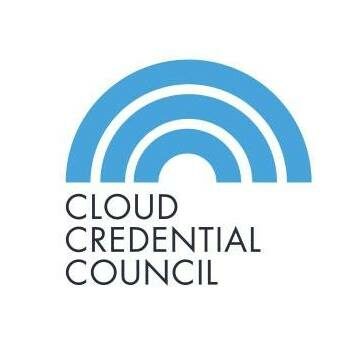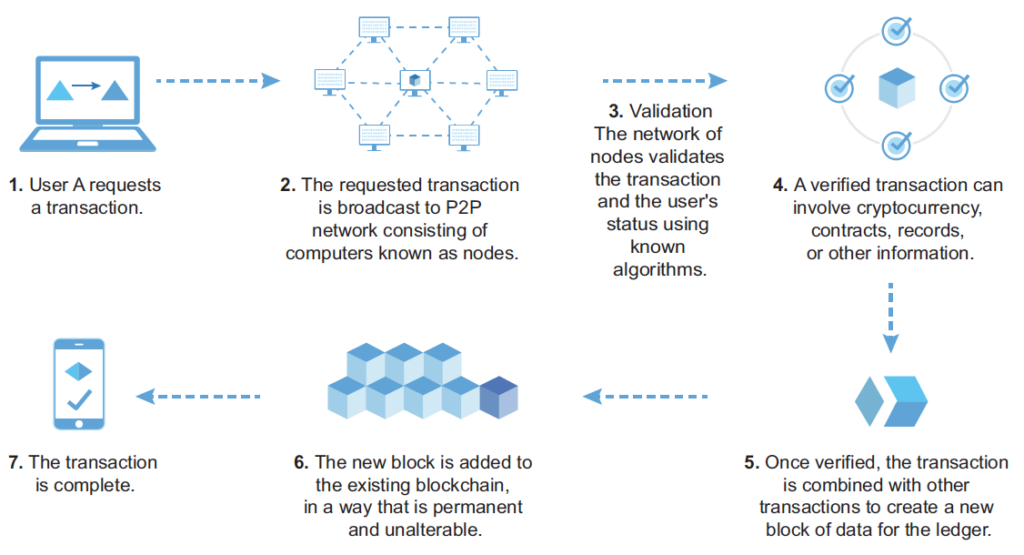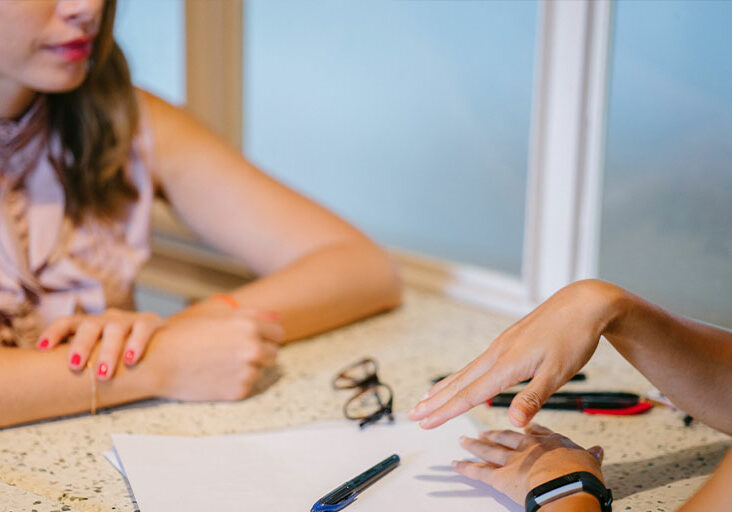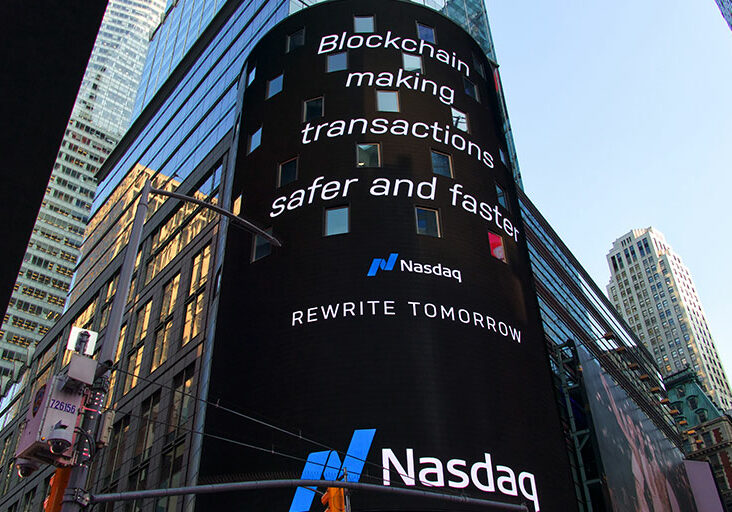Knowledge Byte: Understanding Blockchain 101

Cloud Credential Council (CCC)

Despite its increasing popularity and demand, it’s far from easy to understand what Blockchain actually entails to those who are entirely new to it.
Understanding Blockchain Transactions
Transactions are like lines in a double-entry bookkeeping ledger. Each transaction contains one or more “inputs,” which are like debits against a Bitcoin account. On the other side of the transaction, there are one or more “outputs,” which are like credits added to a Bitcoin account. The inputs and outputs (debits and credits) do not necessarily add up to the same amount. Instead, outputs add up to slightly less than inputs and the difference represents an implied transaction fee, which is a small payment collected by the miner who includes the transaction in the ledger
To initiate a transaction, the requestor’s intention is to publish to the nodes. The nodes scan the entire Bitcoin network to validate that the requestor wants to send some Bitcoin and haven’t already sent it to someone else. Once that information is confirmed by other nodes, the transaction gets included in a “block” which gets attached to the previous block. Usually, six node confirmations are required from the network to consider the transaction final. With today’s computing power and fast network, this happens in a couple of minutes.
Let’s take a real-time example of how a transaction works:
Sherly met with her friend Joe to exchange some cash for Bitcoin. The transaction created by Joe funded Sherly’s wallet with 0.10 Bitcoin (BTC). Now, Sherly will make her first retail transaction, buying a cup of coffee at Ken’s coffee shop in Pearland, Texas. Ken’s coffee shop recently started accepting Bitcoin payments, by adding a Bitcoin option to its point-of-sale system. The prices at Ken’s Cafe are listed in the local currency (US dollars), but at the register, customers have the option of paying in either dollars or Bitcoin. Sherly places her order for a cup of coffee and Ken enters the transaction at the register. The point-of-sale system will convert the total price from US dollars to Bitcoins at the prevailing market rate and display the prices in both currencies, as well as show a QR code containing a payment request for this transaction. Sherly uses her smartphone to scan the barcode on display. Her smartphone shows a payment of 0.0150 BTC to Ken’s Cafe and she selects Send to authorize the payment. Within a few seconds (about the same amount of time as a credit card authorization), Ken would see the transaction on the register, completing the transaction.
Working of Blockchain

Let’s take an example of two users A and user B who are trying to make a transaction. The steps would be as follows:
- Step 1: User A wants to send money to User B. Each of them holds a private and public key. User A adds money to a digital wallet (say Bitcoin) and allows the money to be sent using an encrypted digital signature.
- Step 2: The requested transaction is broadcasted through a peer-to-peer network (consisting of computers known as nodes) using a Public Key.
- Step 3: The network of nodes validates the transaction and the user’s status using known algorithms.
- Step 4: Computers in the connected network verify and validate the transaction. This transaction would include cryptocurrency, contracts, records, or other information.
- Step 5: Once validated the transaction is combined with other the transaction to create a new block of data for the ledger. From the User A perspective, the transaction is complete and money is moving to User B.
- Step 6: Transaction complete.
Note: Steps 4 and 5 are complementary steps. The transaction is confirmed after Step 3; however, block confirmation and further transaction reconfirmations, if required, are then carried out in Step 4 and Step 5.
Courses to help you get
results with Blockchain
Blockchain Foundation™
The industry-recognized CCC Blockchain Foundation provides various practical exercises that allow you to experience two of the most popular cryptocurrencies – Bitcoin and Ethereum. The course’s exposure to real-life blockchain and crypto trading ensures the knowledge you gain is ready to be implemented.
Never miss an interesting article
Get our latest news, tutorials, guides, tips & deals delivered to your inbox.
Keep learning




